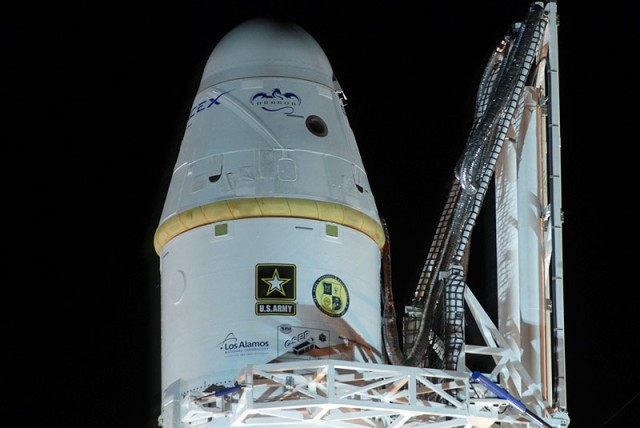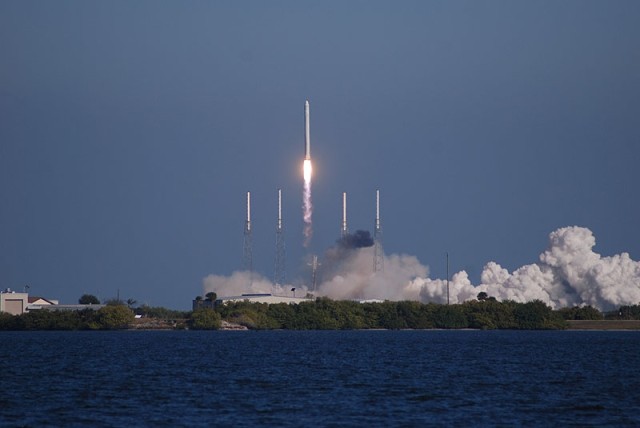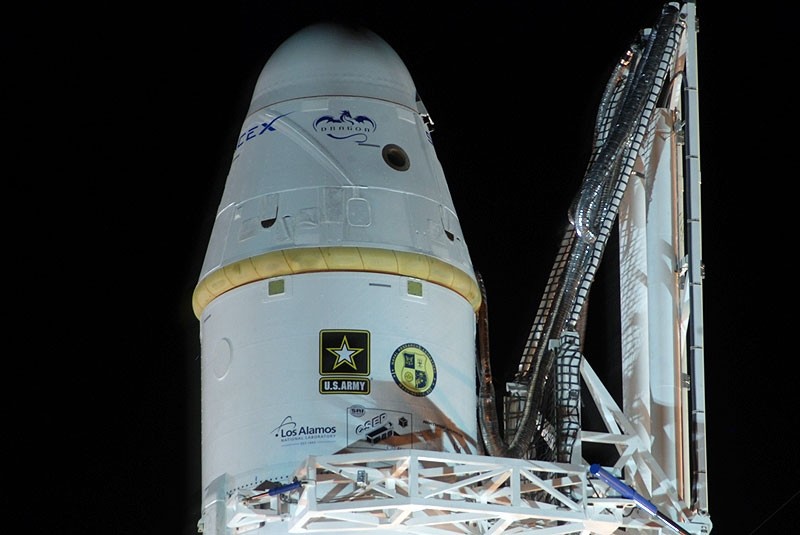REDSTONE ARSENAL, Ala. (Dec. 8, 2010) -- The first U.S. Army nanosatellite lifted off of Launch Pad 40 at Cape Canaveral, Fla., today at 10:43 a.m. Eastern. This is the launch of the first U.S. Army-built satellite in more than 50 years. U.S. Army Space and Missile Defense Command/Army Forces Strategic Command is the Army lead for the SMDC-ONE nanosatellite program.
The Space and Missile Defense Command - Operational Nanosatellite Effect, or SMDC-ONE, launched on a Falcon 9 two-stage booster, a Space Exploration Technologies, Inc, or SpaceX, launch vehicle as a secondary payload. The primary payload for this flight is the SpaceX Dragon spacecraft.
The primary objective of this maiden flight is to receive data from a ground transmitter and relay that data to a ground station. The intent of this technology demonstration is to build a number of identical satellites and deploy them together into Low Earth Orbit to simulate enhanced tactical communications capability and evaluate nanosat performance.
Approximately 45 minutes after launch, SMDC-ONE deployed from the Falcon 9 trunk unit located in the second stage of the rocket and was placed into a low earth orbit.
After being dormant for 30 minutes, the nanosatellite deployed its receiver antennas. Even though in a tumbling mode, the satellite contacted the ground station at USASMDC/ARSTRAT on Redstone Arsenal, Ala., and provided "state-of-health" data.
During orbits over the next four days contact with the second ground station in Colorado Springs, Colo., will be made during orbits.
After deployment, it is expected that SMDC-ONE will remain in orbit for approximately 30 days before dropping out of orbit. Because of its small size and weight, SMDC-ONE is expected to be destroyed during reentry in the atmosphere.
Related Links:
Army.mil: Science and Technology News
STAND-TO!: The Army Space Cadre: Space Professionals (FA40) and Space Enablers




Social Sharing